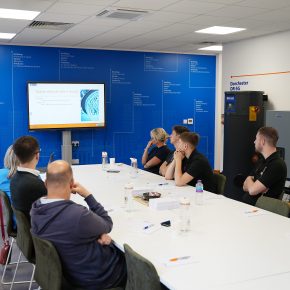
Elements tiling solutions eliminate mouldy mush in shower rooms
Wet and dry rot might take hold with the potential to spread to joists and other timber within the buildings structure. In Scandinavia, where timber construction predominates, plasterboard is banned in shower areas.
Tiling onto plasterboard is common practice in the UK so it is worth understanding why plasterboard fails, even when moisture resistant plasterboards are used. In any shower area, water vapour will inevitably penetrate through joints and defective grout. The problem, even with moisture resistant boards, is that immediately the outer protective layer is punctured in any way, for example by a fixing screw, the board becomes vulnerable to damp and will quickly deteriorate.
It need not be like this, a variety of purpose-made tile backer boards is available that are designed to provide a more durable alternative to plasterboard. These come in various forms, including concrete boards and boards based on XPS (extruded polystyrene) or EPS (expanded polystyrene). Concrete backer boards tend to be heavy and difficult to manoeuvre. Polystyrene boards are much lighter.
EPS tile backer boards in particular have a number of advantages over other products. Importantly, they are highly waterproof, as proven by their use in aggressive environments such as commercial steam rooms. The EPS is sandwiched between coatings of fibre glass reinforced polymer cement, tested to 10 bar of static water pressure. To avoid water penetration into the fabric of the building, all joints are bonded with waterproof adhesives while joints and fixings through the boards are sealed with waterproof tape designed to allow flexibility and movement.
As with plasterboard, EPS backer boards are easy to cut and they offer the benefit of being lighter in weight with have high compressive strength. An additional benefit is their value as a thermal insulator due to the EPS core. This not only improves U-values but helps cut down condensation by preventing thermal bridging from cold external surfaces. The boards are available in thicknesses ranging from 6mm to 100mm.
Unlike plasterboard, EPS backer boards are made with tiling in mind so have a ridged surface. No preparation is necessary and the combination of the cement-faced board and an cement-based adhesive results in a high bond strength, consequently even heavy tiles present none of the problems associated with bonding to smooth paper or plaster surfaces. The fact that no preparation or pre-plastering is required also means that the overall cost of using EPS tile backer boards is equivalent to plasterboard.
The durability and longevity of EPS tile backer boards makes them a more sustainable option over their life-cycle than plasterboard and, unlike XPS based products, the boards are recyclable at end of life.
For further information on Abacus Direct, please visit the website or call 0845 8 50 50 40.
Latest news

24th April 2024
The lowdown on Origin’s New Soho Offering
Origin’s Soho External Door is the first launch in its new generation of products, setting a higher standard for the fenestration industry.
Posted in Access Control & Door Entry Systems, Aluminium Products, Architectural Ironmongery, Articles, Building Industry News, Building Products & Structures, Building Systems, Doors, Innovations & New Products, Posts, Restoration & Refurbishment, Retrofit & Renovation, Security and Fire Protection
24th April 2024
Mitsubishi Electric welcomes new code of conduct for smart appliances
Mitsubishi Electric welcomes a new code of conduct on energy smart appliances which the European Union (EU) announced yesterday at the Hannover Fair in Germany.
Posted in Air Conditioning, Articles, Building Industry Events, Building Industry News, Building Products & Structures, Building Regulations & Accreditations, Building Services, Exhibitions and Conferences, Facility Management & Building Services, Heating Systems, Controls and Management, Heating, Ventilation and Air Conditioning - HVAC, Plumbing, Retrofit & Renovation, Seminars, Sustainability & Energy Efficiency
24th April 2024
Hamworthy Heating expands CIBSE approved CPD modules with new hot water series
Hamworthy Heating, technical experts in commercial heating and hot water products, announce the expansion of its market leading CIBSE approved Continuing Professional Development (CPD) portfolio with the launch of three new learning modules.
Posted in Articles, Building Industry Events, Building Industry News, Building Products & Structures, Building Services, Continuing Professional Development (CPD's), Facility Management & Building Services, Heating Systems, Controls and Management, Heating, Ventilation and Air Conditioning - HVAC, Plumbing, Retrofit & Renovation, Seminars, Training
24th April 2024
New technology partnership brings Passivent ventilation products to IESVE
Passivent has partnered with Integrated Environmental Solutions (IES) to make a number of its products available to model within the Virtual Environment (VE) platform IESVE.
Posted in Air Conditioning, Articles, Building Industry News, Building Products & Structures, Building Services, Facility Management & Building Services, Heating, Ventilation and Air Conditioning - HVAC, Information Technology, Innovations & New Products, Posts, Retrofit & Renovation, Roofs, Ventilation
 Sign up:
Sign up: